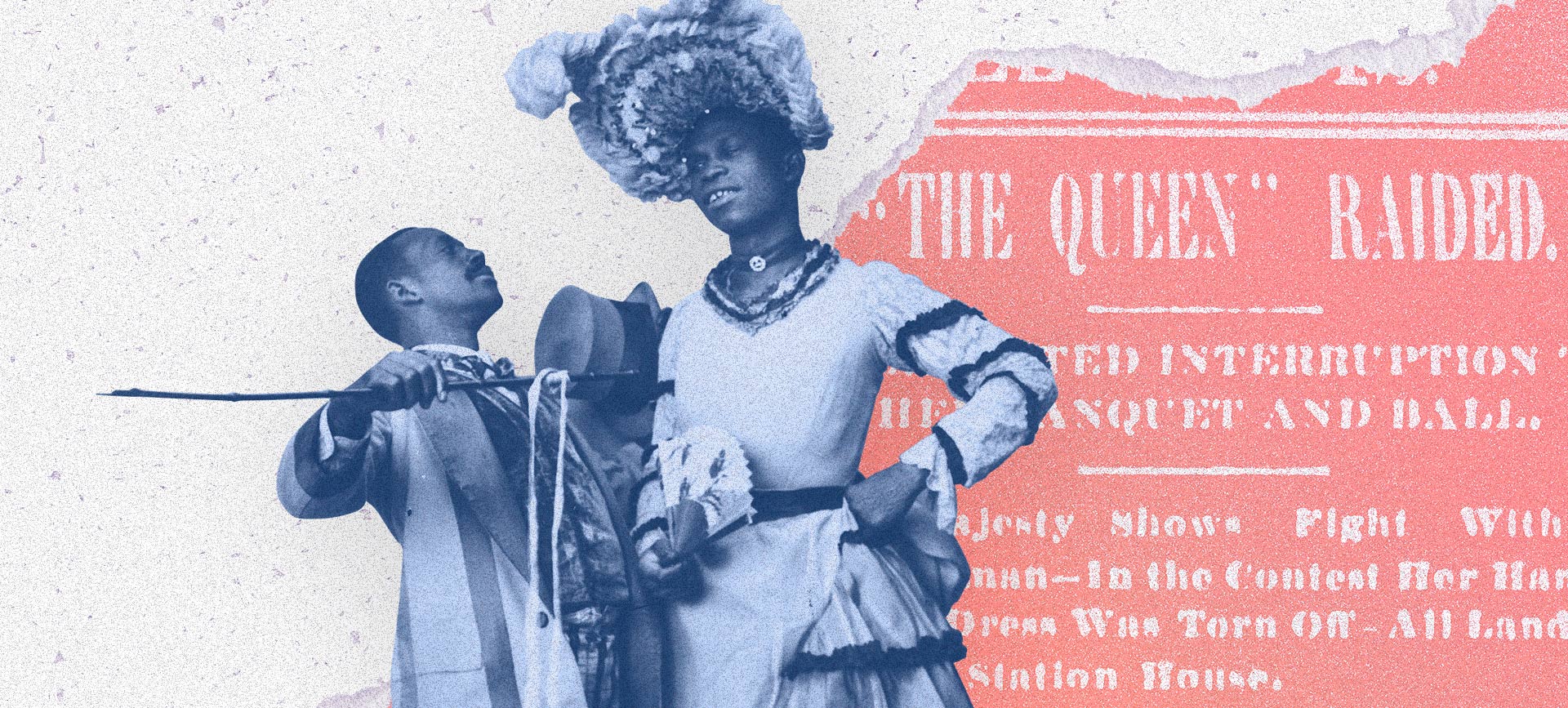Welcome to a collection of Giddy articles on LGBTQIA+ history. Each week we’ll talk about a different part of the community’s past, present and possible future. This week, a profile on the earliest drag balls in American history.


As long as there's been gender, there's been drag. No, you didn't miss a major archaeological breakthrough or a cave painting found depicting drag queens running a brunch. But, really, it only makes sense that playing with gender would immediately follow gender itself.
While the art is most commonly portrayed through drag queens, cross-dressing doesn't flow only one way. For drag prince Innocence Kilz, also known as Alexander Seymour, drag is more nuanced than a one-to-one role-swap.
"If I start by saying the opposite of a drag queen is a drag king, then most people's response to that would be, 'Okay, so a girl who's dressing up as a guy,'" Kilz said. "So then we have to backpedal even further because the fact of the matter is a drag queen can be anybody of any body, of any gender, and so can a king. It's not about cross-gender as much as it's about exaggerated features."
A deeper understanding of drag is the difference between appreciating and appropriating the craft. Even the history of American drag is misunderstood: Despite some drag scholars citing the genesis of the art as occurring in the early 20th century, you can actually trace the origin to a Washington, D.C.–based community activist and drag queen extraordinaire who applied for a pardon in 1896 from President Grover Cleveland. Born into slavery, only to grow up and host magnificent soirées attended by men in ball gowns, William Dorsey Swann is an icon in American LGBTQIA+ and Black history.
While it's unclear if these parties featured performances similar to today's drag, these were glamorous queens. Even the 1888 Washington Post article announcing Swann's arrest for "keeping a house of ill repute" (an inaccurate euphemism referring to a brothel) described the queen of the ball as being "arrayed in a gorgeous dress of cream-colored satin."
In that sense, drag hasn't changed one bit since its inception, because it was always an honoring of self-expression above all else.
This particularly harsh 1888 sentencing Swann would later attempt to appeal stemmed from a party on April 12, 1888, attended by both white and Black men. Only the Black participants were arrested. We only have records of this historic event because they were caught. If the event had not been raided by police, modern-day historians could very well be none the wiser. For such a covert, dangerous tradition to rocket into a lucrative, beloved cultural presence isn't just a sign of progress, it's the alchemical transmutation of oppression into celebration.
This is especially true considering the ubiquitous disgust Swann's trial was met with. In 1896, the Evening Star reported the presiding judge told the defendant, "I would like to send you where you would never again see a man's face and would then like to rid the city of all other disreputable persons of the same kind. Thieving and petty assaults amount to nothing as compared with the conduct of these people."
The fear resulting from such a vehement, merciless and incurious judgment of drag is still felt. Innocence Kilz, despite being born more than a century after Swann, acknowledges the potential threat as implicit to experimentation with gender-coded appearances.
"RuPaul says we're born naked and the rest is drag," Kilz said. "I don't know if I would take it that far. Sometimes it's drag, sometimes it's camouflage. And I think it's drag any time it's not camouflage."
Limiting the gay experience to its oppression and low point is a disservice to all. What fuels the queer community is its celebration of difference in the face of persecution. Kilz expounded on the life-changing joy inherent to drag.
"Realizing how much control I had over that [gender] perception gave me all the power," Kilz said. "There's something fabulous to me about going from completely boring, basic-seeming white boy and meanwhile the people that saw this have no idea, and vice versa. There's people that only know this me, and there's people that only know that me, and then there's the people that see all of me."
The feats of Swann are evocative for a laundry list of reasons. Not only his life as a queer but as a Black man navigating a legal system inherently and systemically against him is relevant beyond occurring many years before Stonewall (which many understand as the gay community's first legally documented clash with the U.S. government).
If Swann's near-erasure from gay history wasn't enough, his predicament remains a relevant reminder of intersectionality, or the different tiers of simultaneous discrimination various members of different communities face.
However, revealing Swann's story shouldn't hail him as the original American disseminator of drag. Many Native American tribes refer to ancient teachings of their two-spirit members where they honored and revered a third gender—women who went to war and married other women, and men who married other men—and this belief predates Columbus' arrival on our shores. But this reminder isn't a cause for despair, it's a testament to the richness of queer culture.
Shrinking the art of drag into a narrow definition, or even limiting it to a binary of male and female, is the same mistake made by so many heterosexuals throughout the years.
That misrepresentation is easily avoided.
The best way to understand gays, lesbians, bisexuals, transgendered folk and nonbinary individuals—as with any other group of people—is to listen to them, learn from them and take the time to research their history.









